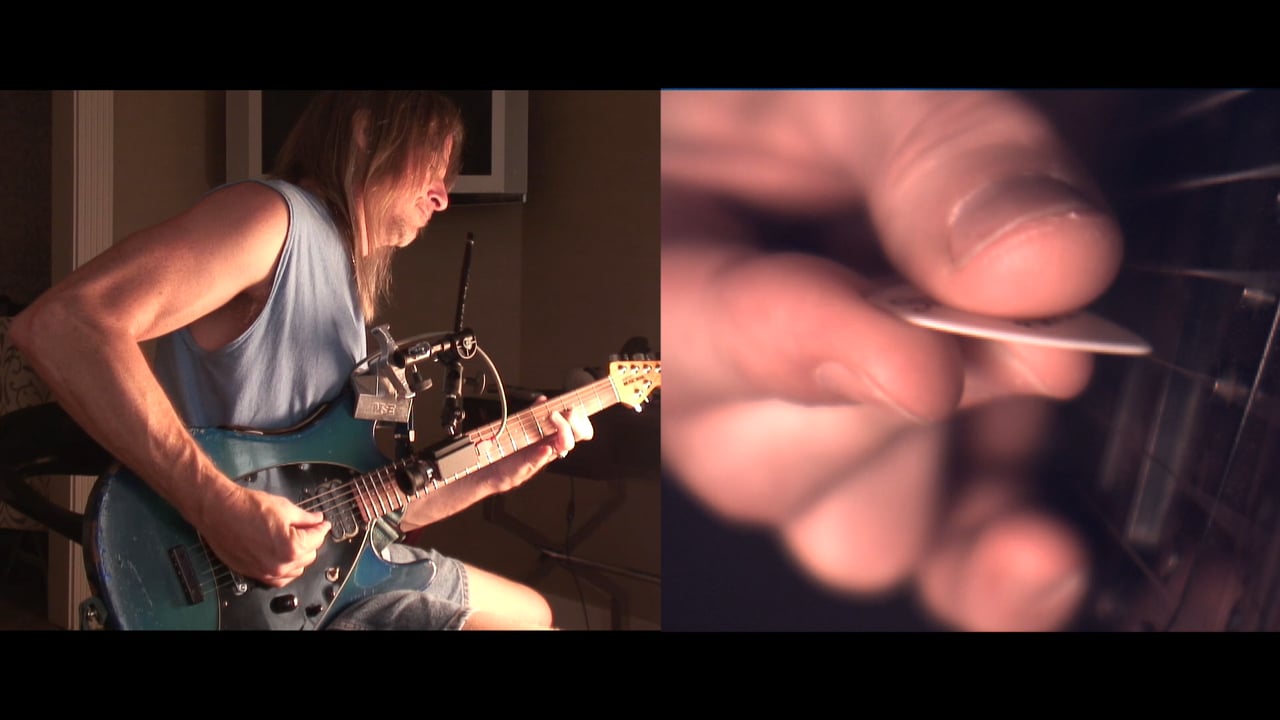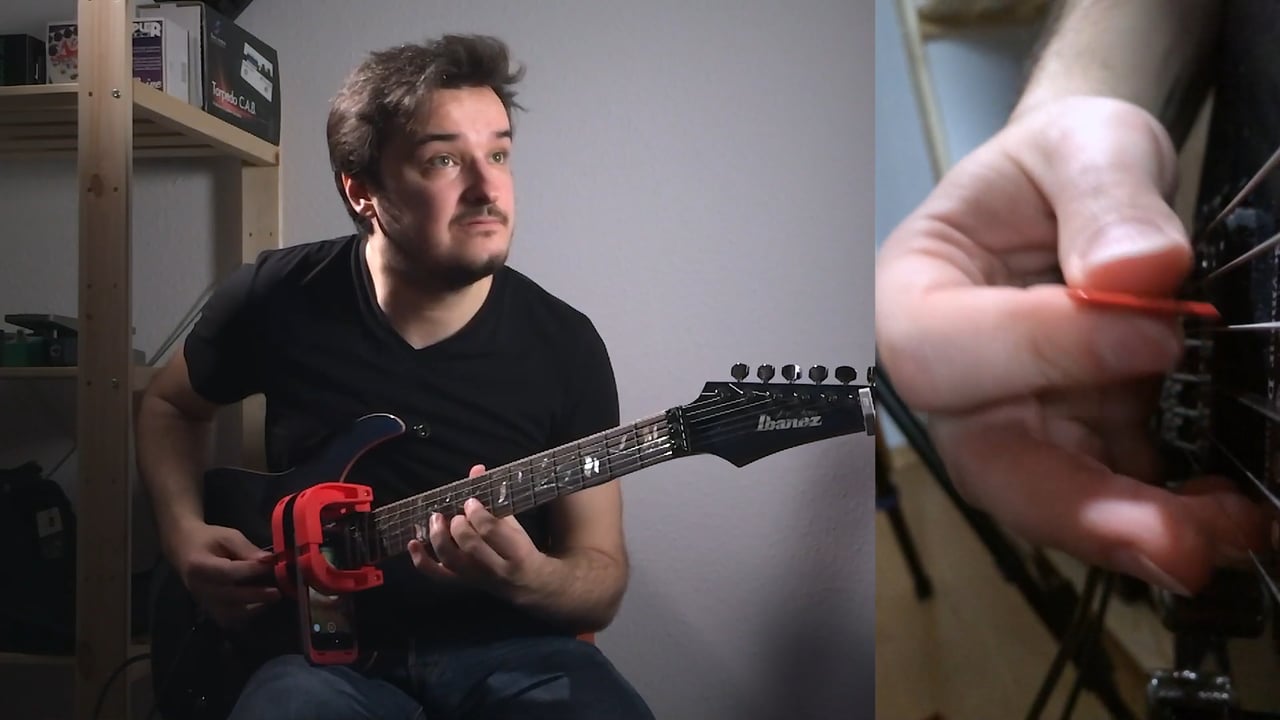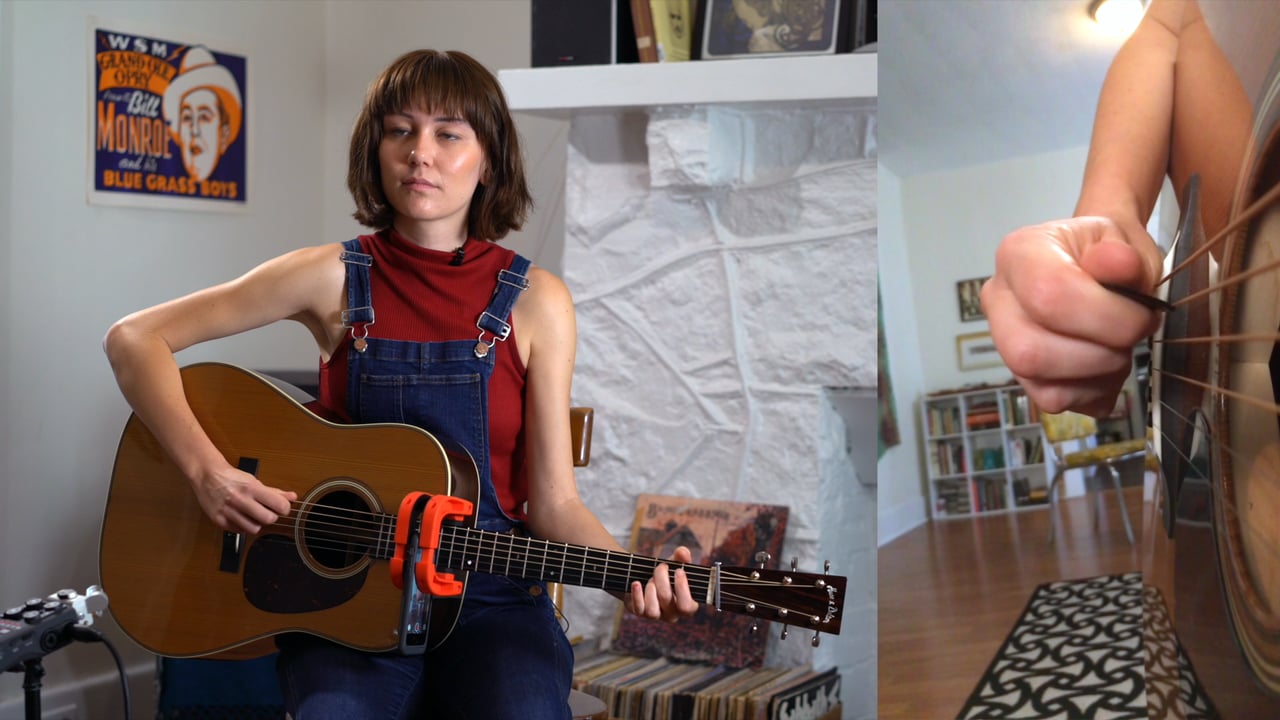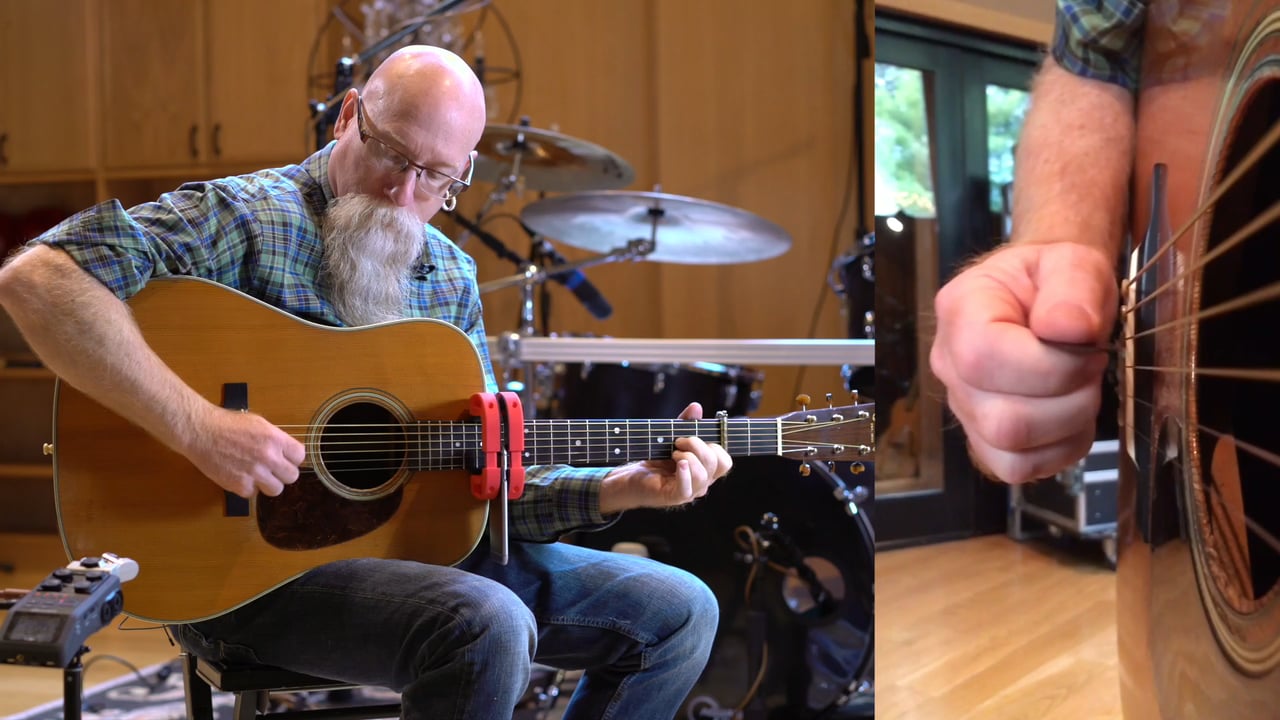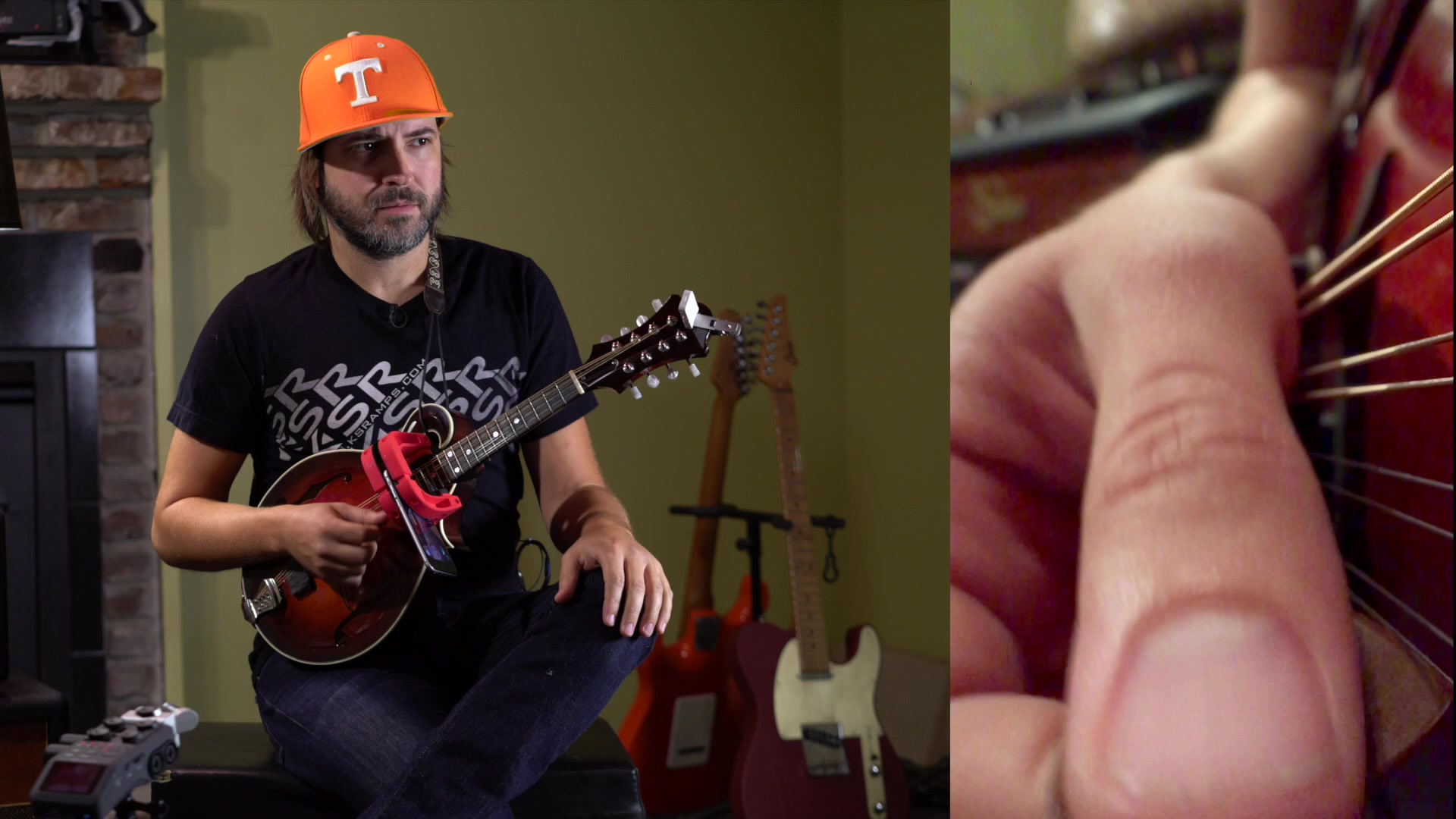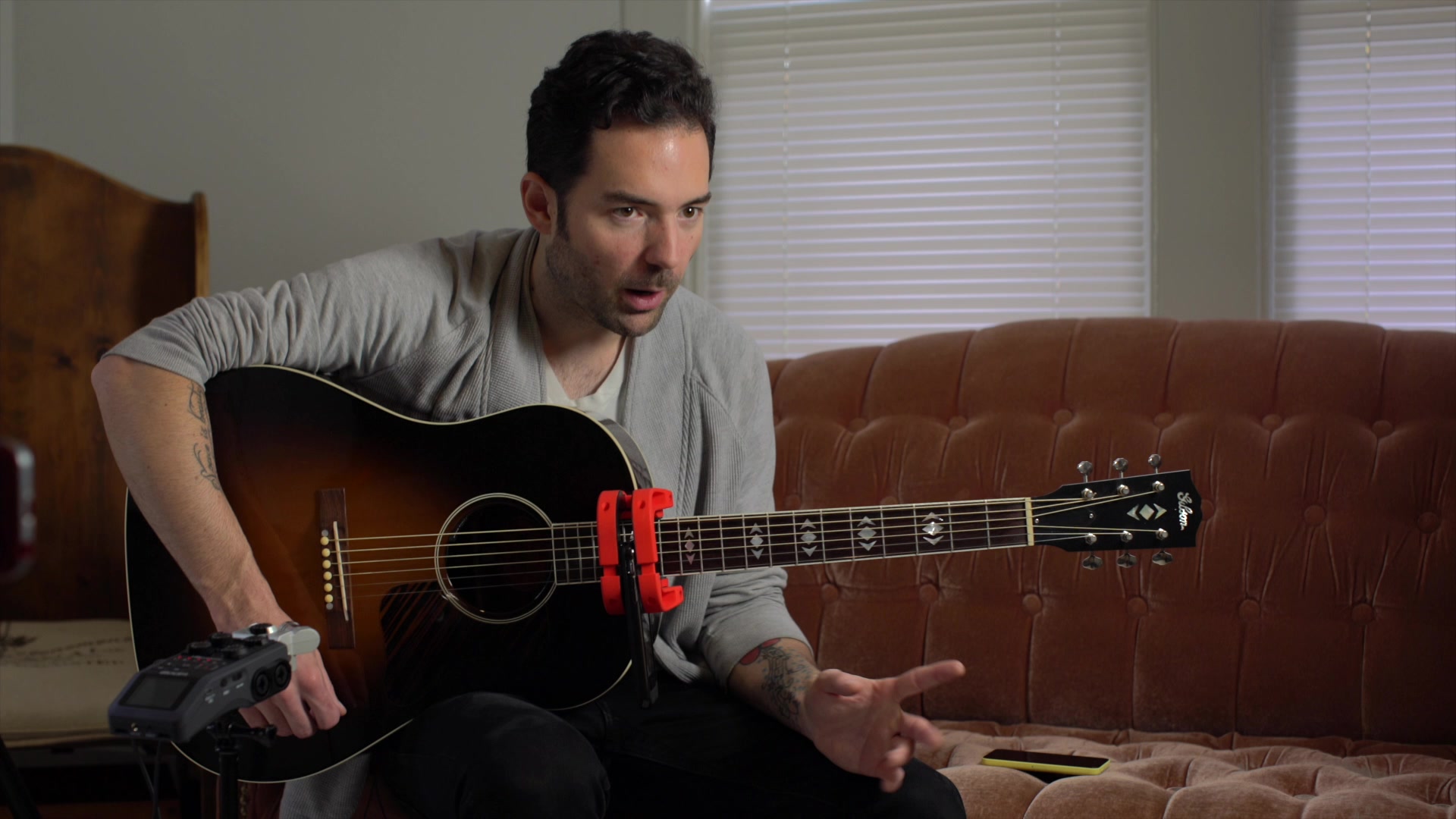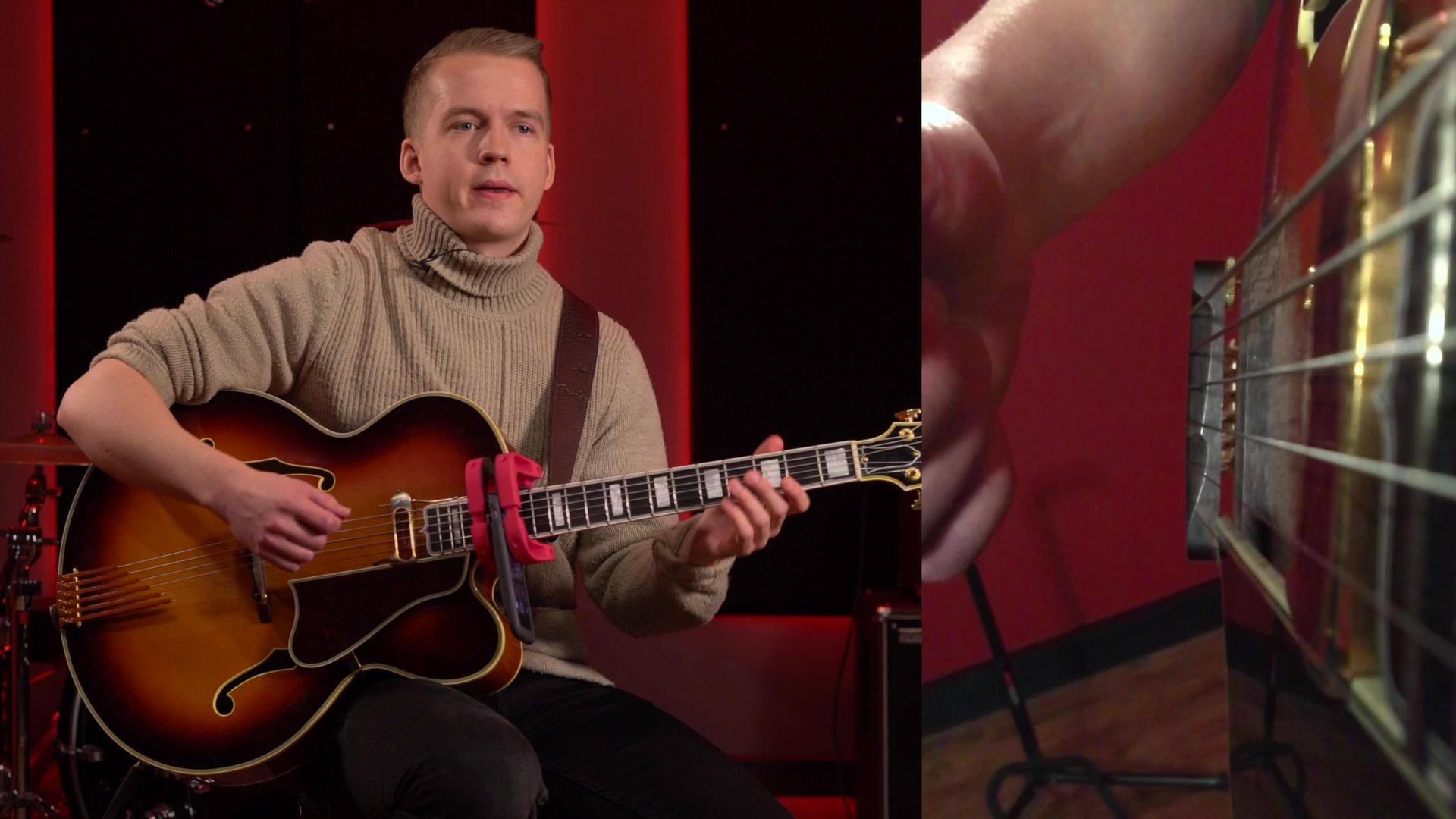DBX Motion
In a double escape or DBX motion, upstrokes and downstrokes are both escape strokes, allowing string changes after any pickstroke.
Unlike USX and DSX single-escape motions, double escape motion doesn’t trace a diagonal path but actually a semicircular one, where each end of the motion moves above the strings, into the escape zone:

When you play multi-string phrases with double escape motion, it doesn’t matter which pickstroke is the final note on the string because every pickstroke can be a string change pickstroke if you want it to be. The curved nature of the picking motion causes both upstrokes and downstrokes to escape:
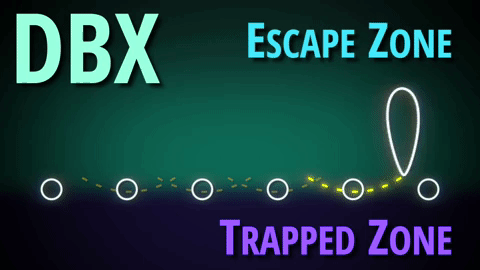
Picking pioneer Steve Morse makes dramatic use of double escape motion in his many arpeggiated signature phrases. His ability to tackle these kinds of lines with speed and smoothness has long been referenced by rock players as a benchmark of alternate picking ability, with his song “Tumeni Notes” in particular often cited as a prime example of his superpowers:
It’s a rare treat to see one of the great techniques in guitar this close up. In slow motion, we can see that there’s an actual mechanical basis for Steve’s ability to play this:
If you’ve spent any time using single-escape motion, you’ll recognize how different this is. Single escape motions move along a diagonal line that points toward the guitar body, so half the motion is always trapped between two strings. But Steve’s entire pickstroke swings gracefully wide of the strings in both directions, creating the characteristic curvature of double escape motion. It’s very cool to look at:
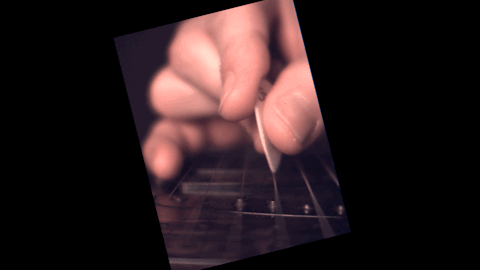
As you admire the gracefulness of Steve’s motion, notice how shallow its curvature is. Although the wrist can move in any direction you want, including straight up in the air, we know from our interviews that wrist players like Steve tend to move closer to parallel with the strings. And given the wide radius of Steve’s flexion-extension wrist motion, his double escape pickstroke is indeed very flat. It curves just gently enough to get over the strings without forcing his hand to make sharp changes in direction. This flatness is where the speed comes from.
The Arpeggio Influence
Unlike many great players we’ve interviewed, Steve is actually aware that the curvature of his pickstroke is a crucial part of its string-switching ability. What we didn’t ask him at the time is whether he started out knowing this, or if he only realized afterward that this is what he was doing.
One hypothesis is that he didn’t begin with a blueprint, but the need to play fast arpeggiated repertoire served as a kind of catalyst for trial and error. Without explicit teaching, he eventually figured out a way of doing double escape motion — again, using wrist flexion and extension — by trying different motions until he found one that made string changes feel smooth.
Whether or not this is true, it is notable that other players we’ve interviewed who are good at double escape motion are also good at alternate picking arpeggios. Olli Soikkeli‘s double escape motion lets him tackle classic swing phrases that move across multiple strings:
Swing melodies frequently contain embedded arpeggios that echo the underlying chords. And watching Olli navigate these arpeggiated string changes in slow motion, the curvature of his double escape pickstroke is easy to see:
In contrast with Steve’s wrist motion, Olli’s incorporates a small amount of forearm rotation, resulting in escape strokes with a slightly more vertical appearance. This isn’t specifically good or bad, just an example of the flexibility of the arm and hand that offers mutliple ways to solve picking problems.
Blazing arpeggiated string-switching power is even possible with finger motion, as the incredible Martin Miller demonstrates:
Bluegrass Standardization
There is one musical style that prominently features arpeggiated alternate picking in its repertoire, and it is a style from which Steve himself drew inspiration:
That style is of course bluegrass, and in our interview with bluegrass flat pick ace Molly Tuttle, we asked her if the famously challenging forward roll pattern from the tune “Beaumont Rag” felt awkward to play. You can catch her response at the end of the video: “Not really!” As in Steve’s case, the reason for Molly’s smoothness on these tricky patterns is easy to see in slow motion:
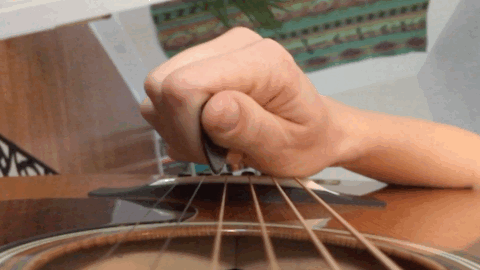
One of the cool illusions of elite-level double escape wrist motion like Molly’s is that when you look at the knuckles of the hand, it’s hard to see the up and down motion, even though when you look at the pick you can see that it’s definitely happening. This is how flat the motion is when done correctly. And again, this flatness is why it’s fast.
Bluegrass as a guitar style is not standardized to the same degree as Gypsy guitar, where students are explicitly taught to use the same specific joint combinations to generate the picking motion. Instead, bluegrass teaching has historically offered varying degrees of specificity on mechanics depending on the instructor. But it is de facto standardized more broadly at the level of escape motion, because of the need to play signature stylistic elements like roll patterns.
As a result, many players appear to find their way to double escape technique even if they end up using a variety of different joint motions to do it. Bluegrass is notable in guitar music for the number of great players who have developed fluent double escape technique, like the incomparable David Grier:
Subsconscious Technique Development
Despite the very particular influence that certain musical styles seem to exert in guiding players toward double escape technique, this influence appears to operate at a mostly subconscious level.
Multi-instrumentalist Andy Wood uses double escape motion on both guitar and mandolin. In this fascinating clip from his double-header acoustic interview, Andy demonstrates the difference in feel between his double escape and single escape picking motions on mandolin:
One thing we’ve learned from our many conversations with Andy is that he’s a supremely self-aware player. He’ll be the first to tell you when he can’t give you the technical description of some aspect of his technique, instead offering a description of the feel of actually doing it. So it’s significant how little he can feel the semicircular nature of his double escape motion.
In recounting how he developed his current technique, fellow Winfield contest winner Carl Miner also describes being unaware of what he describes as the “circular sweeping motion” of his double escape picking:
In our interview with swing maestro Olli Soikkeli, he explains that he’s only aware of what his motion looks like when he looks in a mirror:
Double Escape vs Stringhopping
And that’s a great indication of how little feeling of tension these techniques generate when done correctly. All the double escape picking techniques we’ve looked at here are efficient and can be done for long periods of time with relaxation. Like all true alternate picking techniques, this is thanks to their alternating muscle usage, which gives each side of the motion a rest while the other side is working.
So even though double escape motion might seem like stringhopping because the pickstrokes go up in the air, it’s not. It’s much flatter and faster, with none of the bouncy appearance or tension-inducing muscle overuse that stringhopping produces. On the flip side, stringhopping does technically qualify as a “double escape” motion, since it escapes on both pickstrokes. But to keep things simple, in our lessons we usually just say “stringhopping” when we mean stringhopping, and “double escape” when we mean the more efficient motion used for arpeggio picking.
